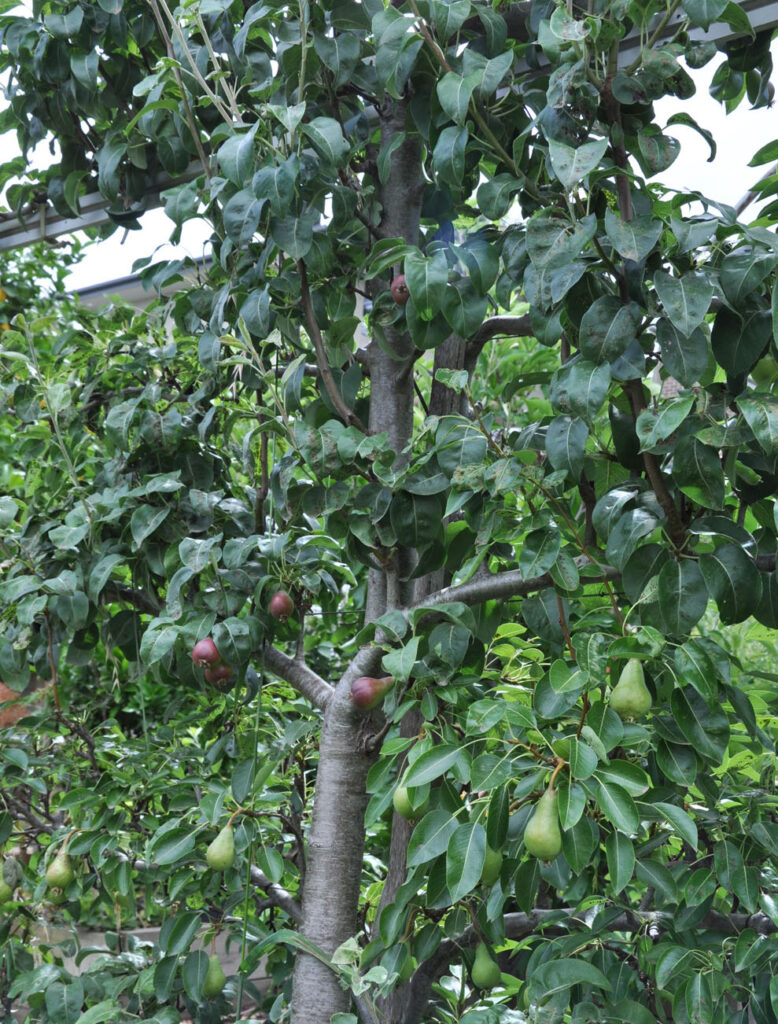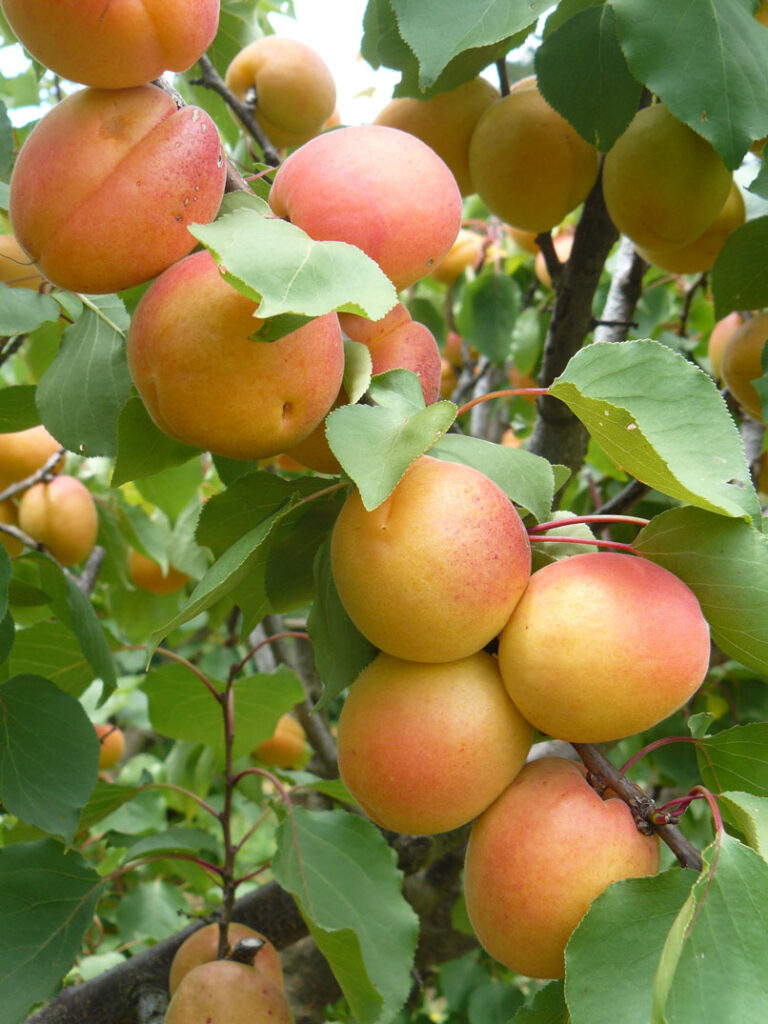
Fruit and nut trees offer a variety of landscape solutions
By Janet Hodgkiss –
Gardens that include productive fruiting trees and plants are often thought of as ‘unattractive’ but this need not be so as many of these plants have other valuable characteristics and attributes that are often overlooked
A productive, as well as ornamental, design is very achievable with the many varieties, sizes and shapes of all types of fruiting plants that are on offer. Here are a few options to consider that will fulfil some design basics.
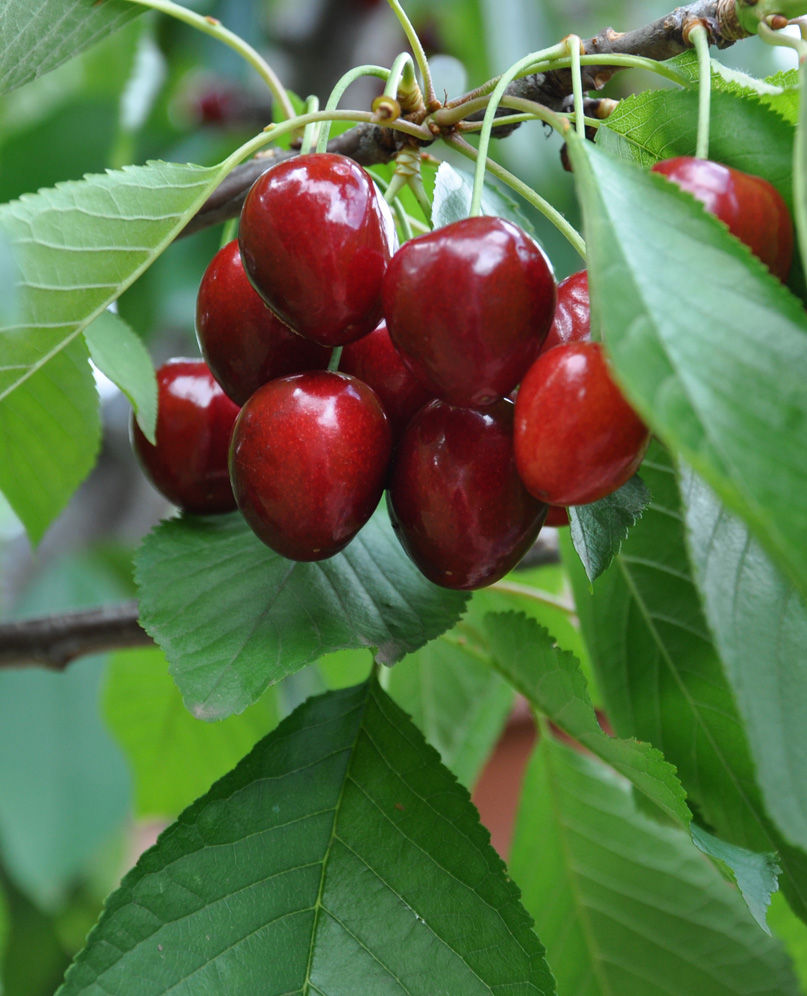
Cherry tree providing welcome summer shade
(Image: Janet Hodgkiss)
Colour
Designers are often requested to include colour in their landscape or garden designs, and while people may only think of showy flowering plants, or ornamental trees and shrubs to provide tried and trusted leaf colour, many fruiting trees and plants can offer the same qualities as well as providing delicious fruit.
Spring blossom is always welcome and if a fruiting tree is selected, then those blossoms will be followed by tasty fruit too. Apples, cherries, peaches, plums and other stone fruit provide flower colour in shades of pink and white. Fruiting pears with their white blossom can give a similar spring flower display to that of ornamental pears, while peach tree blossom ranges from the very palest pink to much darker shades.
Blueberries are versatile shrubs and offer great grey and blue shades through their foliage and fruit, and in a garden design, have the added advantage of lending themselves to informal hedging as well.
If spectacular leaf colour and bright autumn shades are required, then persimmons tick those boxes with their leaves and fruit, while many other deciduous fruit trees will also show autumn leaf colour.
Shade
Cherries are the essence of summer and can double as very effective shade trees too. They provide a cool spot to sit under, or when planted in front of north-facing windows will shade them from the hot summer sun. They can be kept to a manageable 3 or 4m in height and being deciduous, will drop their leaves in winter and let the sun stream in through those same windows. Cherries prefer cooler, less humid climates and cold winter, and there are many varieties including self-pollinating ones to choose from.
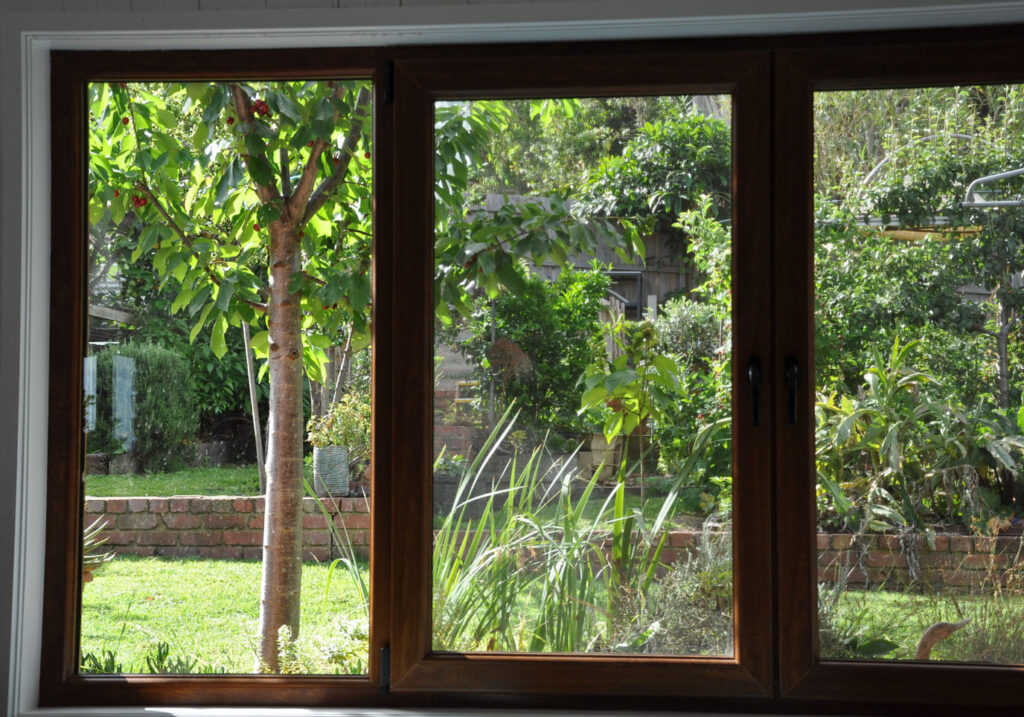
Cherry tree shade provides a cool vista form inside (Image: Janet Hodgkiss)
Mulberry trees require minimal care and their large leaves, provide deep, solid shade. They can be messy when the fruit ripens, so keep this in mind and avoid planting near patios or paths. If fruit stains are a concern, then non-fruiting varieties are available.
Nut trees, such as pecans and walnuts also make good shade trees. They are however large trees, so will need the space a larger garden can offer. Their compound leaves provide dappled shade and a less dense canopy.
Space
As our gardens get smaller and smaller, and space for growing fruit trees shrinks, designers may opt to forego edibles in favour of the showier ornamentals. There is something very satisfying about growing edibles in a garden, and no matter how small the space, there are still ways of including these in a garden design.
Dwarf trees are usually the ‘go-to’ when space is limited and there are many citrus, stone-fruit and other varieties to choose from. Dwarf trees produce full-size fruit on a smaller plant and it is worth noting that ‘dwarf’ doesn’t always imply a plant that will only grow 1-2m tall. Some dwarf varieties may grow between 3-4m, which means they are dwarf in comparison to their ‘non-dwarf’ counterparts which may ordinarily grow 5-8m tall.

Dwarf Apricot ‘Tilton’ (Image: JFT Nurseries)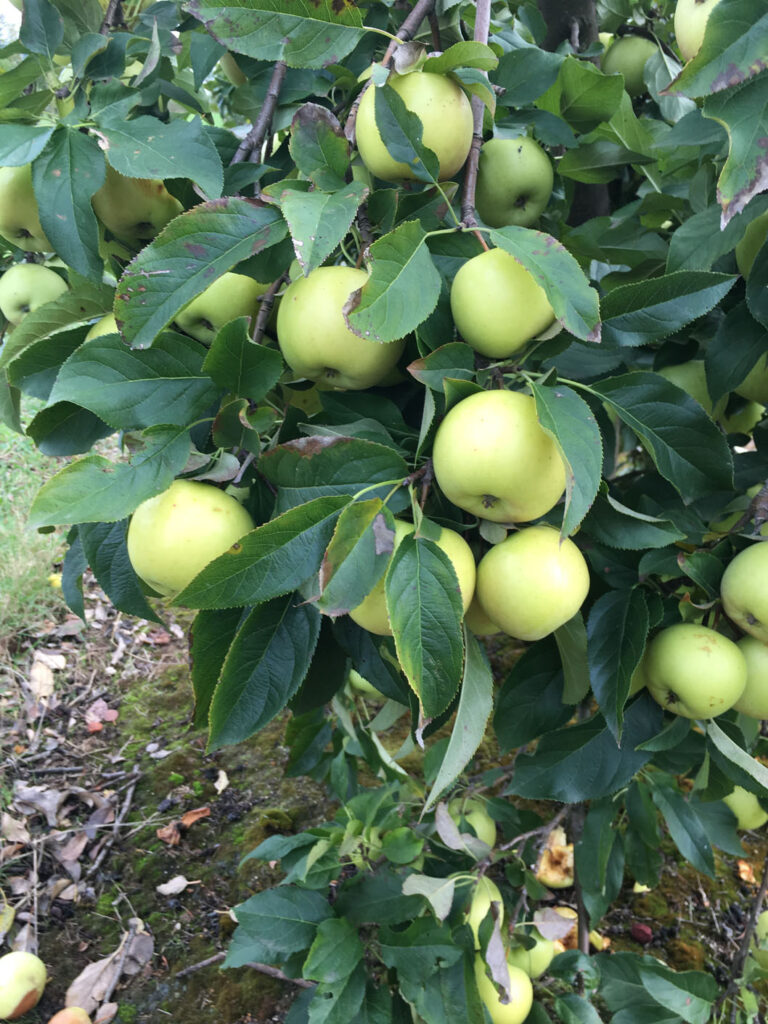
Space-saving columnar apple trees produce full-size fruit (Image: JFT Nurseries)
Multi-grafts, where two or more varieties are grafted onto a single rootstock, are another good option as you only need to dig one hole, and the canopy space required is usually only that of one plant and not two.
Espaliers make use of the vertical plane and are invaluable where space is at a premium. Trees are trained flat against a wall or trellis and take up little space, with the added advantage of doing this being that more light is able to reach the branches, so flower and fruit set is often enhanced. The choices are almost endless when it comes to using fruiting trees and plants in a design, and if space is the main concern, then it’s definitely worth looking up the specialist suppliers of dwarf, multi-graft or espaliered fruit trees.
